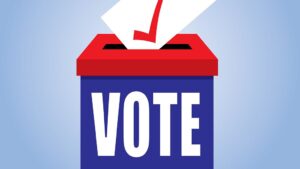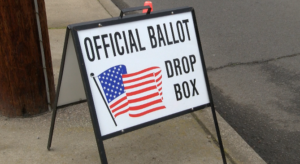Voter Information for the
November 3, 2020 Election


VOTING IN ILLINOIS 2020
EASY GUIDE
Registration
Register online or check to see if you are registered by October 29 here: https://ova.elections.il.gov
Deadline for online registration – October 29
Register by mail – by October 6
In person registration – Tuesday November 3
Mail-in Voting
Application for mail in Voting must be received by October 29. Apply online:
https://www.elections.il.gov/ElectionOperations/VotingByMail.aspx
You can drop your mail-in ballot in a Voter’s Drop Box, or through the Post Office
Find your Jurisdiction’s drop boxes at https://www.elections.il/gov
Or you can take to your voting place on November 3rd. If you decide to vote in person on Election Day you can surrender your mail-in ballot and it will be voided.
Now is the time to plan how you will vote in this General Election.
McHenry County Official Drop Boxes for Voter Ballots


Kane County Official Drop Boxes for Voter Ballots
Aurora Satellite Office (Inside) 8:30 a.m. – 4:30 p.m. Mon – Fri
5 E. Downer Pl., Suite F, Aurora, IL 60505
City of Elgin (Inside) 8 a.m. – 5 p.m. Mon – Fri
150 Dexter Ct, Elgin, IL 60120
TRACK YOUR VOTE!
Illinois Safeguards on Voting
Before Election Day
- By law, all equipment must be rigorously and successfully tested and approved by both an independent voting system testing laboratory (VSTL) and by the State Board of Elections’ team of election specialists.
- Automatic tabulating equipment programmed only using unique office and candidate ID numbers which are assigned by the State Board of Elections and provided to the election authority.
- All election authorities must conduct a pre-test to ensure 100% accuracy in detecting ballots that are overvoted (more votes marked on the ballot than are allowed), under voted (fewer votes marked on the ballot than are allowed) or cannot be read by the system.
- Not less than five days before the election, a “public test” is held. Public notice of the time and place of the public test must be given at least 48 hours prior to the test by publishing notice in one or more newspapers within the election jurisdiction. The test is required to be open to representatives of the political parties, the press, representatives of the State Board and the public.
- After an errorless public test, all materials used in the test must be SEALED AND REMAINSEALED.
- State Board also conducts random tests up to two days before the public test.
On Election Day
- Election judges oversee voting at every polling place
Election judges are citizen volunteers who are trained by the county governments to work at polling places.
Depending on the county, there will be three to five election judges present at every precinct polling place. - Judges must represent both Democratic and Republican parties.
- In addition to election judges, authorized poll watchers may be present
o Poll watchers can be representatives of established political parties, candidates, qualified organizations of citizens, State nonpartisan civic organizations, or organized proponents or opponents of ballot propositions.
They are permitted to closely observe election judges and periodically inspect the equipment when not in use by voters.
After Election Day
- Election judges oversee voting at every polling place.
Immediately after polls close, judges open the ballot box and count ballots to make sure the number agrees with number of voters voting according to both scan equipment and by applications for ballots. - “In-precinct totals report” must be generated and posted in a conspicuous area inside the polling place.
- Bipartisan team of two judges immediately returns the paper ballots and all other election materials to the election authority in a sealed container.
- After election day, the State Board randomly selects 5% of precincts and early voting equipment in all election jurisdictions to retabulate ballots to check for accuracy.
In those precincts or on the early voting equipment selected for retabulations, the election authority conducts a post-election test similar to the pre-test and public test.
Representatives of both parties, the local state’s attorney, local law enforcement agencies and qualified civic organizations are notified of its time and place and can be present for the retabulation.
The outcome of the election is not official until this full process is complete. This can take up to three weeks.